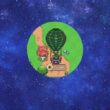Internet Computer (ICP) is one of the exceptions in decentralized projects, diverging from previous approaches to blockchain. Instead of relying on consumer electronics or voluntary network mining, ICP has built a semi-decentralized computation system allowing access to distributed startups.
It is no wonder then that ICP was also among the first networks to be selected for play to earn games. The approach of ICP allows for fast decentralized computation, with no constraints from block size or gas fees. This turns Internet Computer into one of the first networks to run at the speed of the internet and seamlessly integrate both gaming and token transactions.
Why Internet Computer is Different
Internet Computer arrived on the crypto stage in a way quite different from other projects. ICP for a short time held the spot as a top 5 coin by market capitalization, with prices above $600. This briefly served as publicity exposure before ICT crashed much lower and settled between $40 and $50 per coin.
ICP still gained popularity and was immediately listed on Coinbase and Binance, ensuring the native token had sufficient liquidity.
How Internet Computer Works
The fast, scalable blockchain of ICP works by creating canisters – objects of decentralized computation, which set aside memory and capacity based on the demand of the specific apps.
The ICP canisters are already open to developers, and are considered an alternative to big cloud-based services on the Internet.
ICP tokens can then be converted in multiple ways to go through the Internet computer. Developers can use them to buy canisters for computation, or the tokens can be locked for voting and governance. The third way is to exchange them for other assets.
The capacity of canisters is set by smart contracts, and the resources on ICP are protected against malicious attacks and getting wasted by code. Buyers of canister cycles cannot trade them back to ICP. In the future, Internet Computer expects computation to decrease in price as disk space and computation become cheaper.
A rough estimate, the current price per 1 trillion computational cycles is around $1.40 on average, and is recalculated every five minutes based on network load. The price may go up or down.
How to Access ICP
The ICP token is accessible not through a classic wallet, but through a feature in the Network Nervous System app.
The NNS app requires an account creation, which builds a unique Internet Identity anchor. The account creation will need to authenticate a device.
Using NNP gives access to buying cycles, governance, staking and is geared toward developers.
Accessing the Internet Computer for play to earn requires a lighter type of wallet capable of holding ICP. For fast connection to NFT games and play to earn platforms, Stoic Wallet and Cronic Wallet offer a connection.
The wallets can generate a new private key, and can also be activated with an existing Internet identity from the NNP app.
Stoic Wallet is a general tool to access the user side of Internet Computer, with an access to a beta Marketplace for digital goods and a list of dApps and potentially, games.
The wallet resembles the widely used MyEtherWallet, it is web-based and protected by a 12-word seed phrase and a password. The biggest risk for this type of wallet is to be exposed to a faked page or another tool attempting to steal the private keys. Always input the Stoic wallet address manually and avoid following links with prompts to input a private key.
Are There Games Running on ICP
The ICP network, with its relatively low price for computation, is already attracting play to earn games. ICP Snakes combines the collectible idea, but makes each NFT playable, with intention to introduce play to earn.
The other source of earnings is from the Stoic wallet marketplace, which already hosts a limited collection of characters. The Internet Computer DFinity organization showcases a list of varied distributed apps, but the addition of games is an almost daily event. Play2Moon will track the newest additions and review the GameFi titles with the biggest potential.










